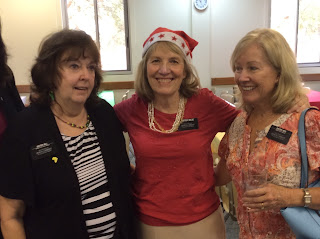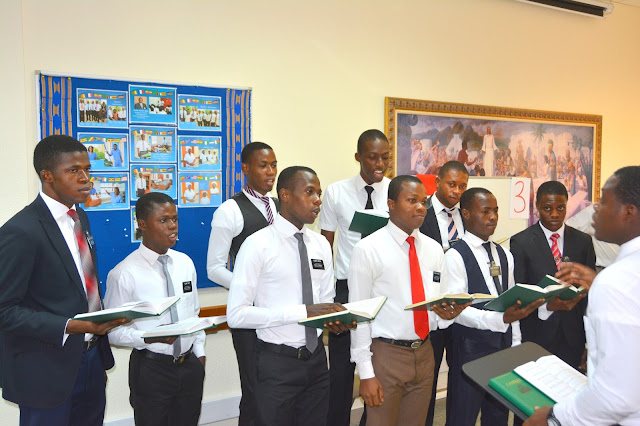The Christmas season was not ushered in with snow or even cold winds.
It was odd Christmas with no grandchildren around, no presents to buy and no Christmas carols on the radio. But Christmas came just the same. The birth of the Savior was and is something to celebrate and ponder.
It began with an office devotional in the Christiansborg Stake Center. Sister Cannon lent me a red necklace to go with my white blouse. The employee choir directed by Brother Brown sang one of our favorite Ghanaian song, "Oye- God is Good. He's good to me" The Senior Missionary Choir also sang with Elder Smith at the piano.
Curtises invited everyone over for a Christmas Sing along. It was wonderful complete with a real candle burning.
The next week all the zone missionaries and a few extras went to lunch at the Alisha Hotel.
Our Christmas Eve was a special lasagna night prepared by several Christmas Elves who precooked dinner for all the rest of the Family Home Evening group. We played the white elephant game which went well until Sister Martins opened up a plastic snake.
Christmas day we spent with 33 missionaries who spent their Christmas at the MTC. We helped bring salads and desserts for them meal and then some singing with Elder Smith, we divided into groups for game playing. Elder Wilde and I played Christmas (fruit) basket and we picked Christmas objects. We played with non-English speakers, so it took a while for it to work, but after they got it, it was their favorite rotation.
Sister Diane Robison,, the MTC Presidents wife, poses with Margaret and the sweet staff who helped us cook dinner.
Have you ever seen such a long name? This elder was from Madagascar.
Some of the Senior Missionaries who participated with all 33 of the young missionaries:
Sanders, Parkes, Canons, Hills, Smiths, Malmrose, Calls ,Kirkhams, Wades, Browns, Panters, Terrys, Bullocks, Sister Martins, Packs, Wildes and Stokers.
We gave them journals and they loved them.
Silent Night Holy Night. The tree made out of a raisin bran box worked just fine. It fell over just enough to make it feel like home.











































.JPG)














